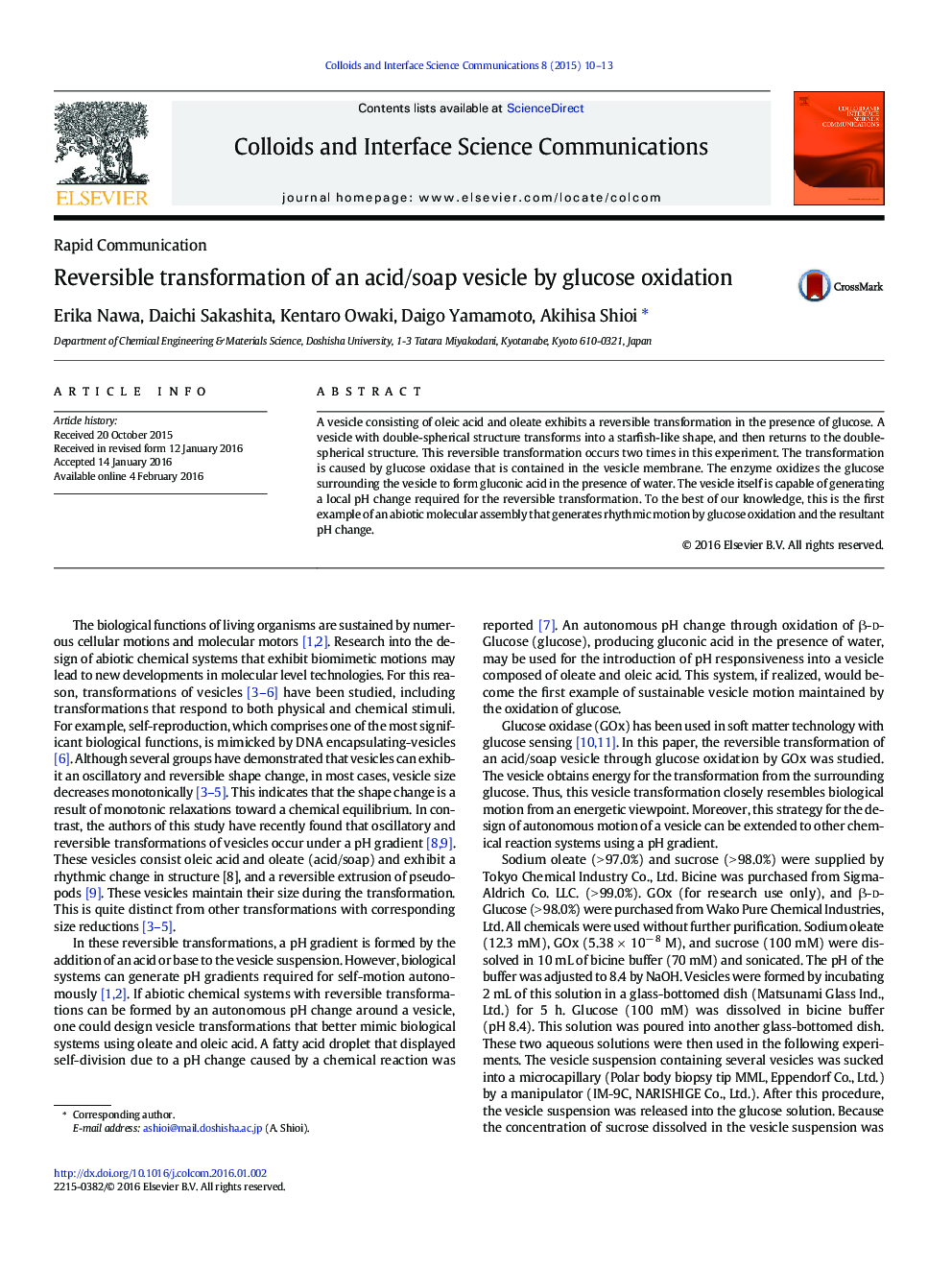| Article ID | Journal | Published Year | Pages | File Type |
|---|---|---|---|---|
| 591392 | Colloid and Interface Science Communications | 2015 | 4 Pages |
•A reversible transformation of a vesicle was observed under presence of glucose.•This transformation is caused by glucose oxidation and resultant local pH change.•This is the first example of vesicle with rhythmic motion caused by glucose.
A vesicle consisting of oleic acid and oleate exhibits a reversible transformation in the presence of glucose. A vesicle with double-spherical structure transforms into a starfish-like shape, and then returns to the double-spherical structure. This reversible transformation occurs two times in this experiment. The transformation is caused by glucose oxidase that is contained in the vesicle membrane. The enzyme oxidizes the glucose surrounding the vesicle to form gluconic acid in the presence of water. The vesicle itself is capable of generating a local pH change required for the reversible transformation. To the best of our knowledge, this is the first example of an abiotic molecular assembly that generates rhythmic motion by glucose oxidation and the resultant pH change.
Graphical abstractA reversible transformation of a vesicle using energy of glucose oxidationFigure optionsDownload full-size imageDownload as PowerPoint slide
